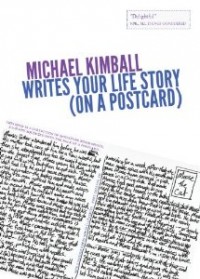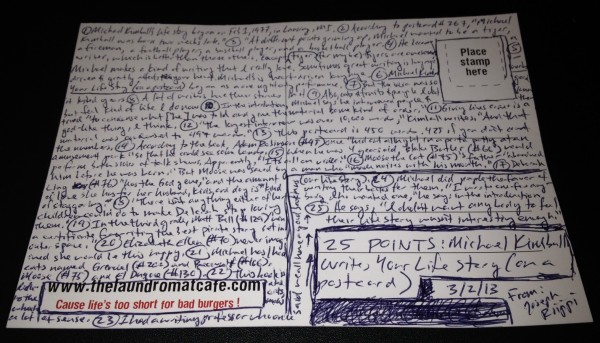 The Man Who Noticed Everything
The Man Who Noticed Everything
by Adrian Van Young
Black Lawrence Press, 2013
200 pages / $16.00 buy from Black Lawrence Press
[Update]”The Sub-Leaser,” discussed here, is now available to read in Electric Literature’s “Recommended Reading” [End Update]
1. I first met Adrian Van Young at 2012 AWP, when he was hanging out at the Gigantic table. I remembered him as an engaging person to talk to. That’s saying a lot, cuz, you know, AWP.
2. Six months later he emailed me about reading in Baltimore. That’s when I remembered what a nice guy he was.
3. His email was cordial but also professional, and he attached a press release about his book, The Man Who Noticed Everything, and a headshot. The color scheme in the photo matched the colors on his book jacket: black and dark green.
4. Ben Marcus said “you’d think this book was an anthology collecting the work of the best young writers of the new generation”—talking about The Man Who Noticed Everything.
5. So we set up a reading for January, even though I hadn’t read his book and even though the main provision for the series that Stephanie Barber and I run is that we’ll only host writers whose work we really admire. I guess the thinking was, this guy has his act together.
6. And he does. I’m not just saying that because he brought a fresh bottle of Jameson to the reading.
7. At the reading, Adrian read a short story. Sometimes I have a hard time listening to fiction. It can be so boring.
8. But while Adrian read, I laughed and laughed. The story was called “The Sub-Leaser,” and listening to it, I felt like it was full of jokes. Or, actually, it struck me as a better kind of funny writing, in which there aren’t actually jokes, but the whole concept (and the way the concept is delivered) is meant to be funny.
9. What’s more, the funniness happens within the prose, which is primarily descriptive, and that is a really hard and precarious thing to do. The story’s narrator is describing his apartment. He says, “My apartment is a standard one for the part of the city where I live. It begins at the door, which opens, like so, to show the splintered wooden hallway that I mentioned before. On the right is a bathroom, ill-sequenced of tile, with a sink built onto the wall and a bathtub, where a thin and mildewed curtain hangs, clad in a pattern of green and white plaid. To the left of the curtain, an insolent toilet, coated with a film of brown.”
10. “ill-sequenced of tile”? “an insolent toilet”? You see what I mean. The whole story is like that. READ MORE >






 Michael Kimball Writes Your Life Story (on a postcard)
Michael Kimball Writes Your Life Story (on a postcard)

 The Man Who Noticed Everything
The Man Who Noticed Everything